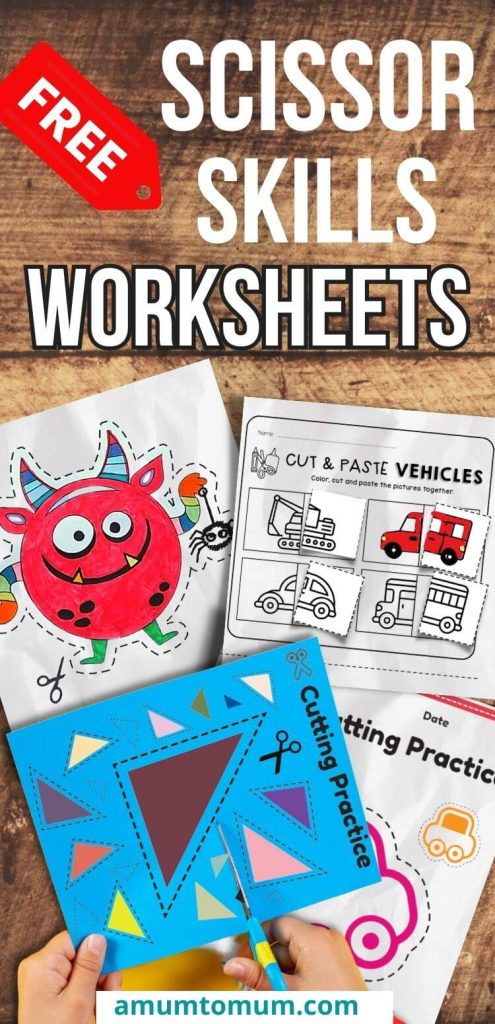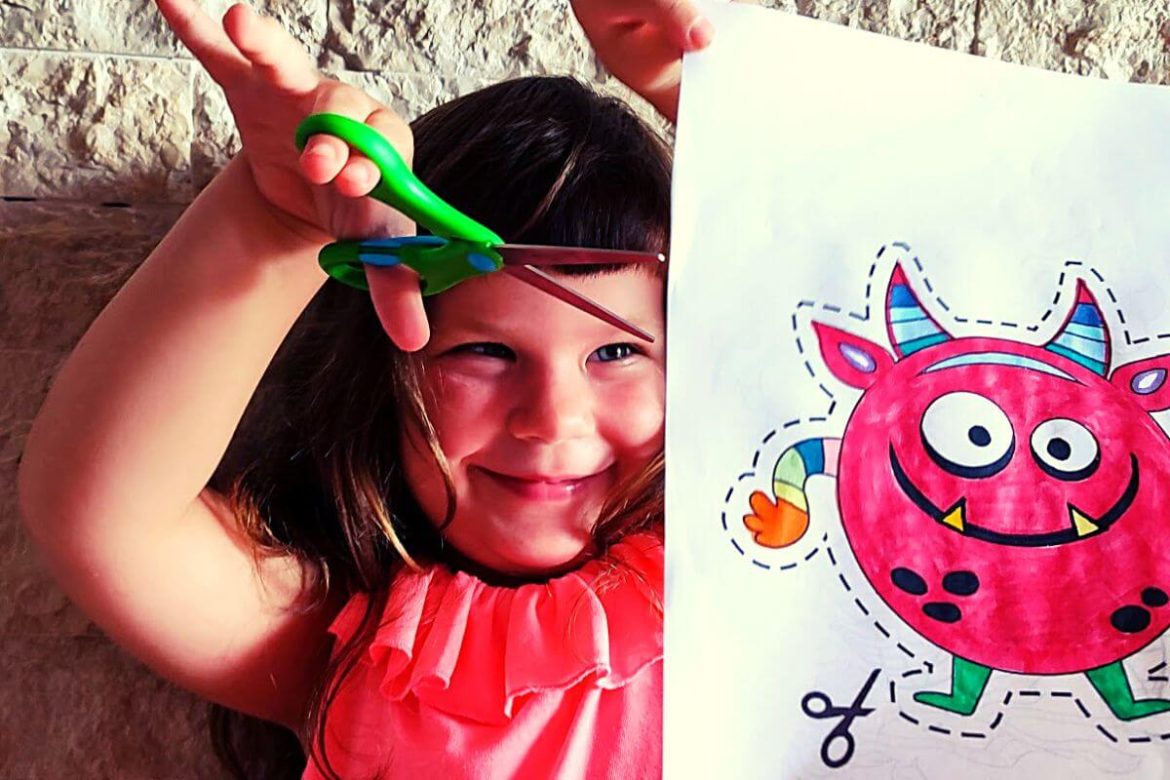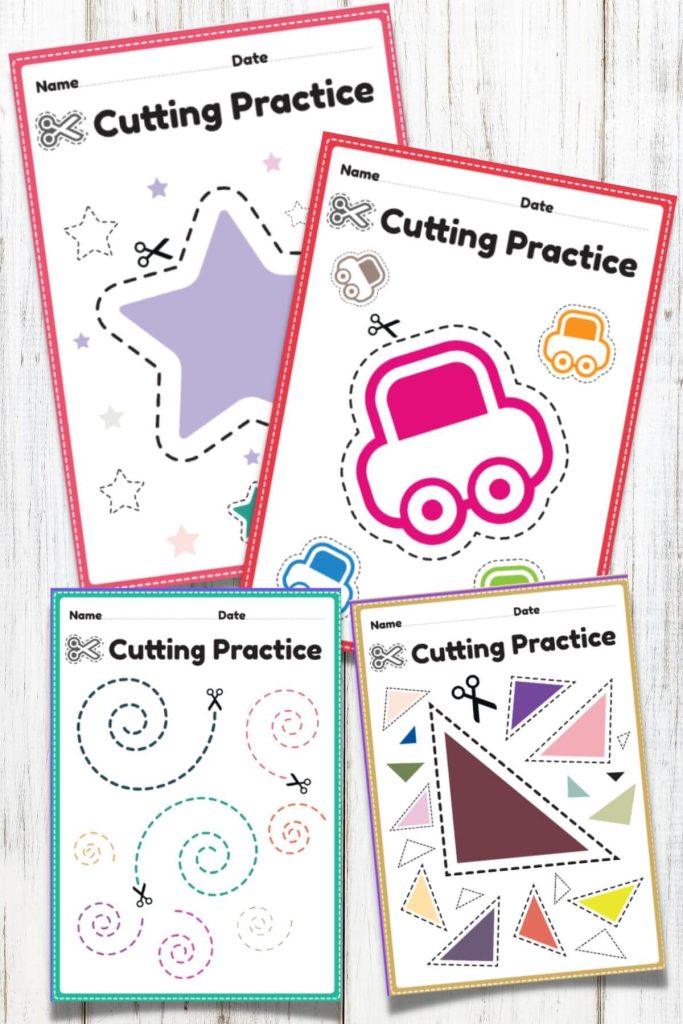You’re facing the unique challenge of introducing scissors to your preschooler, aren’t you? I’ve got you covered.
With my free scissor skills printable worksheets, you’ll transform this task into a fun, educational journey. Watch as your child’s hand-eye coordination and cognitive skills flourish.
But remember, safety first! So, grab those child-safe scissors, and let’s dive into a world of playful learning.
Free Scissor Skills Printable Worksheets
Get ready to explore three fantastic, free scissor skills worksheets perfect for your preschooler.
I’ve got:
- Halloween Monsters Cutting Practice for some spooky fun.
- Cut and Paste Vehicles Printables is for little car enthusiasts.
- Shape Cutting Worksheets boost learning about shapes and colors.
Let’s discover how these can make learning scissor skills a snip-snap.
#1 Halloween Monsters Coloring Pages for Cutting Practice
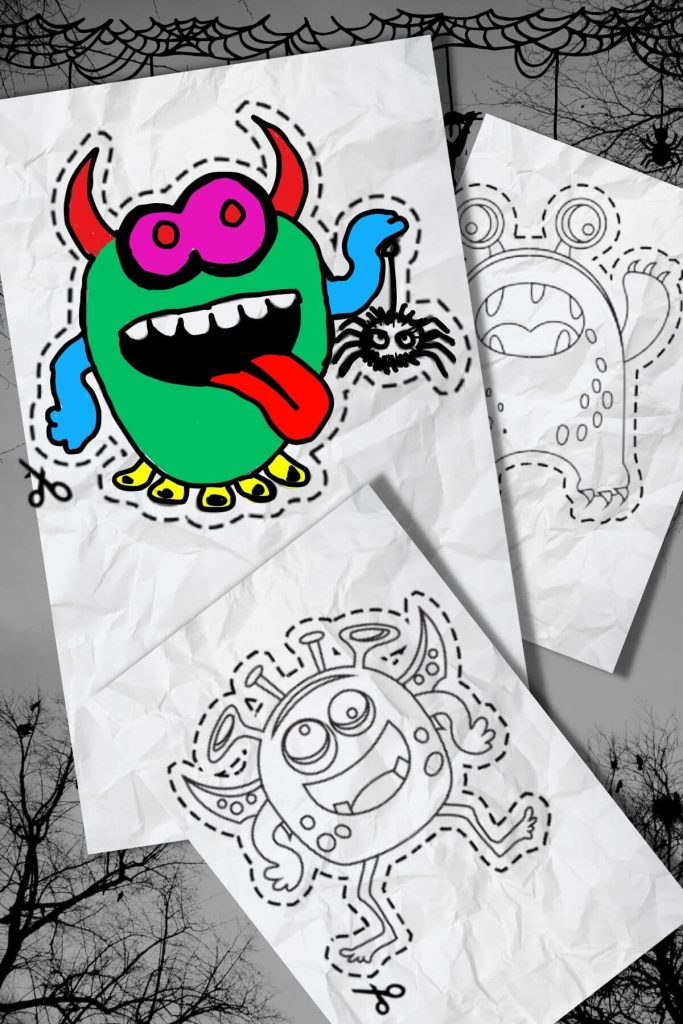
In the Halloween Monsters Cutting Practice, you’ll find 12 spooky monsters that your preschooler can color before carefully cutting out, adding a fun, Halloween-themed twist to developing their scissor skills.
This activity encourages toddlers to engage in crafts–an exciting way to reinforce hand-eye coordination. Remember, scissors safety is crucial. Always supervise your little one during such activities.
These printables aren’t just worksheets; they’re a creative outlet for your child. Cutting shapes out of paper helps refine their fine motor skills, while coloring the monsters can spark their imagination.
RELATED ARTICLE: Learning Letters Printables
#2 Cut and Paste Vehicles Printables
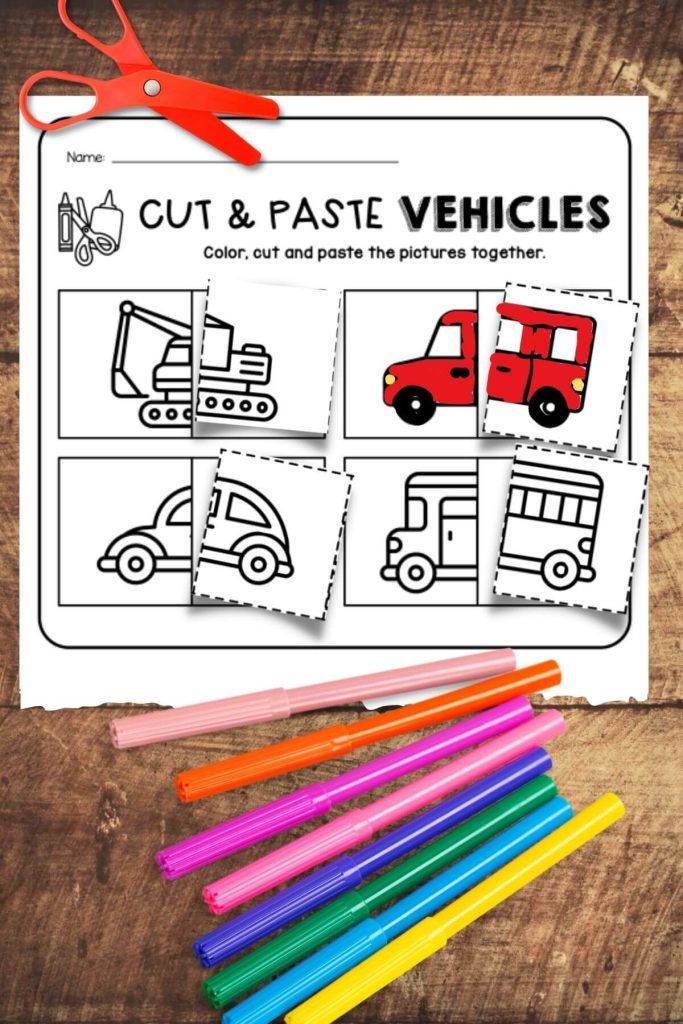
You’ll find your child thoroughly engaged with the Cut and Paste Vehicles Printables, a set of 10 worksheets that promote both creativity and the development of scissor skills. These free scissor skills worksheets are specifically designed for preschoolers to develop their fine motor skills.
Here’s what your child will learn:
- Cutting along the lines: Your child will practice cutting lines accurately, which is crucial for their fine motor development.
- Identifying different vehicles: These printables have a variety of vehicles, enhancing your child’s knowledge and vocabulary.
- Pasting pieces together: After cutting, your child will paste the vehicle parts together, improving their motor skills.
- Coloring: These worksheets offer coloring options, fostering your child’s creativity.
These educational tools make practicing fun and engaging for children.
**Disclosure: This page contains affiliate links. If you choose to purchase after clicking a link, I may receive a commission at no extra cost to you.
#3 Shape Cutting Worksheets
You’ll absolutely love the Shape Cutting Worksheets, which are part of the set of three free scissor skills printable worksheets designed to enhance your preschooler’s understanding of shapes and colors while also honing their scissor skills.
These worksheets are perfect for teaching kids about different shapes through tracing and cutting, thereby improving their dexterity. These lesson plans aren’t just about learning; they’re about development.
As your preschoolers navigate through the cutting activities, they’re unknowingly enhancing their motor skills and boosting their cognitive growth. Using scissors helps to develop their coordination and focus.
RELATED ARTICLE: Fun ways to teach colors!
Using Scissors Has Benefits for Preschoolers
There are some key benefits your preschooler can gain from developing scissor skills. As part of their education and classroom activities, these skills are crucial for their kindergarten readiness.
- Fine motor skill development
- Using scissors requires precise hand movements and coordination between the hands and eyes. Regular scissor use helps strengthen the muscles in the hands and fingers, improving fine motor skills.
- Hand-eye coordination
- Cutting along lines or shapes helps preschoolers develop hand-eye coordination, as they need to visually track the lines and control their hand movements accordingly.
- Bilateral coordination
- Cutting with scissors requires the use of both hands simultaneously, promoting bilateral coordination. This skill is essential for many activities, such as writing, tying shoelaces, and playing sports.
- Cognitive development
- Cutting involves planning, problem-solving, and spatial reasoning. Preschoolers need to analyze the task, decide where to cut, and make adjustments as needed. This promotes cognitive skills and critical thinking.
- Creativity and imagination
- Scissors allow preschoolers to engage in arts and crafts activities, giving them a chance to express their creativity and use their imagination. They can cut out shapes, create collages, or make paper crafts, fostering their artistic abilities.
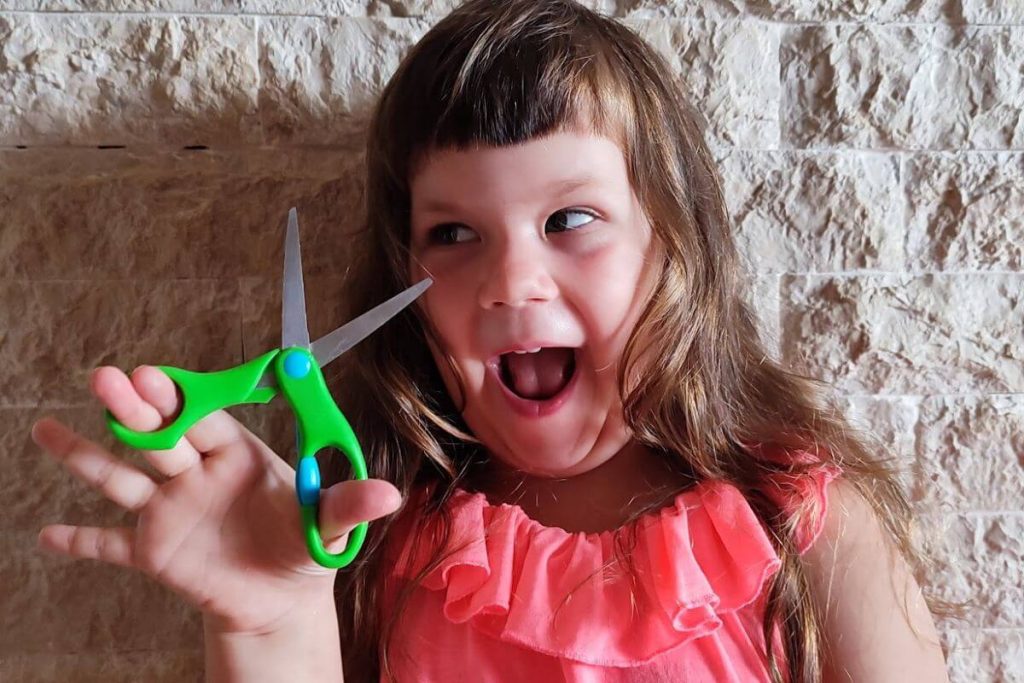
- Independence and self-confidence
- As preschoolers learn to handle scissors and cut independently, they develop a sense of accomplishment and self-confidence. This boosts their self-esteem and encourages them to explore and engage in more activities.
- Pre-writing skills
- Cutting helps develop the muscles and coordination needed for writing. The fine motor skills acquired through scissor use are crucial for holding and controlling a pencil or pen later on.
- Language and communication
- Cutting activities often involve following instructions, discussing shapes, colors, or patterns, and engaging in conversations with peers or adults. This promotes language and communication skills.
- Patience and focus
- Cutting requires concentration and patience, as preschoolers need to maintain focus and control their movements. Regular practice with scissors can help improve attention span and develop patience.
- Sensory stimulation
- Cutting different materials, such as paper, felt, or foam, offers sensory experiences for preschoolers. They can feel the textures, hear the sounds, and see the results of their cutting, enhancing their sensory development.
RELATED ARTICLE: Brain Teasers for Kids
At What Age Can Kids Use Scissors?
Children can start cutting activities around the age of 2 or 3 years old. At this age, their fine motor skills and hand-eye coordination are developing, making it easier for them to hold and manipulate scissors.
2 – 3 Year Old
Before cutting they learn to open and close the scissors, but they are not yet ready to use them on paper.
This is a great time to practice with:
- play dough,
- modeling clay,
- or continue to practice tearing paper.
Once the child has mastered opening and closing the scissors, they can move on to making small snips on the paper.
3 – 3.5 Year Old
By age 3 to 3.5, a child can move the scissors along a straight line that is 6 inches long. Their accuracy is still a work in progress, with most cutting within 1/2 inch of the cutting line.
More activities to develop scissor skills
4 Year Old
Children who are 4 years and older are typically expected to independently cut basic shapes like circles, squares, and triangles as part of their developmental progress.
6 Year Old
Scissor skills are fully developed until around age 6. It is important to note that adult supervision and appropriate child-safe scissors are necessary during these activities to ensure safety.
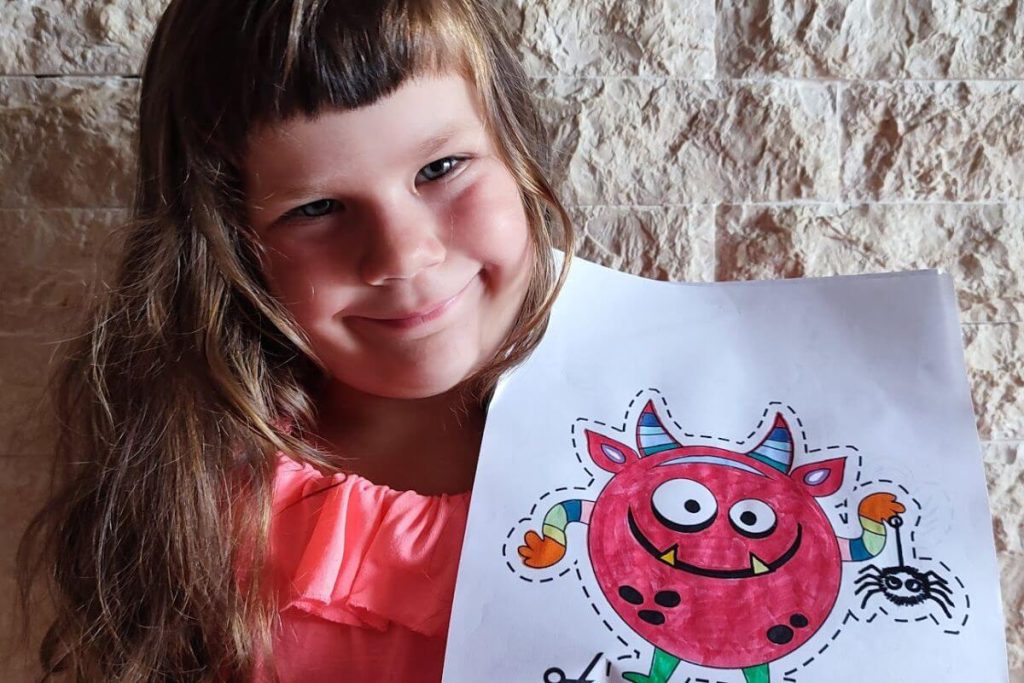
Tips for Developing and Nurturing Scissor Skills in Preschoolers
While it’s essential to use age-appropriate scissors, you also need to provide engaging and varied activities to nurture your preschooler’s scissor skills effectively. Patience and focus are key in this developmental milestone. Here are a few tips:
- Encourage teacher-supported play with printable worksheets. They provide fun, educational activities that can lead to improvement in scissor skills.
- Cater to both left-handed and right-handed preschoolers. Don’t forget, the lefties need their own special scissors!
- Celebrate small milestones. Every cut brings your child closer to mastering scissor skills.
- Lastly, practice, practice, practice. Remember, it’s not about perfection but progression.
With your guidance and these helpful tips, your preschooler will be cutting with confidence in no time.
Provide adult supervision and child-safe scissors, such as Fiskars SoftGrip Scissors, to ensure safety during cutting activities.
Frequently Asked Questions
What Are Some Other Fun Activities That Can Help Strengthen My Child’s Scissor Skills?
You can strengthen your child’s scissor skills with fun activities like cutting play dough, making paper snowflakes, or clipping coupons. They’ll love creating crafts while improving their motor skills and hand-eye coordination.
Are There Any Specific Types of Scissors That Are Recommended for Preschoolers?
Sure, for preschoolers, safety scissors are best. They’re designed for little hands and have blunt ends for safe use. Remember, supervision is key while they’re learning to cut. Practice makes perfect, so keep at it!
How Can I Make Sure My Child Is Holding the Scissors Correctly When Practicing?
To ensure your child’s holding scissors correctly, watch their thumb. It should be on top, facing upwards. Their index and middle fingers should be underneath, guiding the cutting. Practice consistently, it’ll become second nature.
How Can Parents or Educators Assess the Progress of a Child’s Scissor Skills Development?
You can assess your child’s scissor skills progress by observing their ability to cut along lines, around shapes, and their control and accuracy. Review their completed worksheets and note improvements over time.
Are There Any Recommended Strategies for Helping Children Who Are Struggling With Scissor Skills?
Yes, there are strategies to help kids struggling with scissor skills. You can start with play dough, then move to cutting straws or thick paper. Remember, it’s fine to progress gradually and celebrate small victories.
Conclusion
So, there you have it! The world of scissor skills is waiting to be explored by your little one. These worksheets are nothing short of magic, transforming simple paper into delightful masterpieces.
Remember, every snip and cut they make is a giant leap in their development.
So, go ahead, download these free worksheets, and set off on an exciting adventure that’s as sharp as a pair of scissors yet as safe as a teddy bear’s hug!
Have fun, and don’t forget to explore our other FREEBIE collection!
